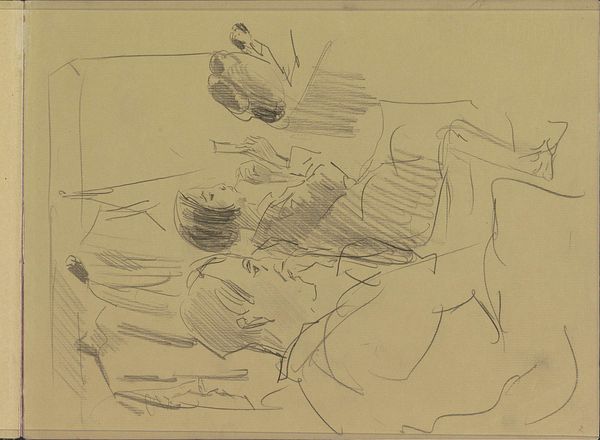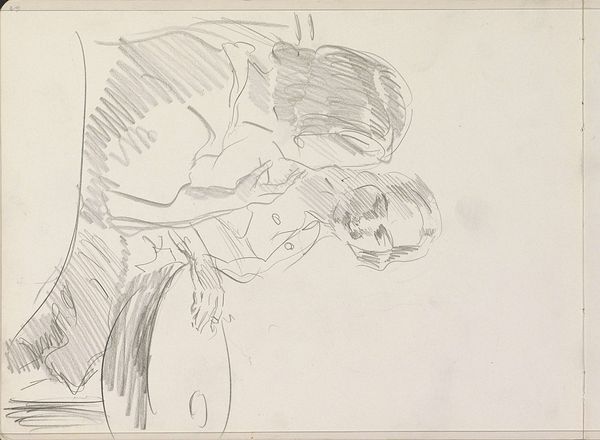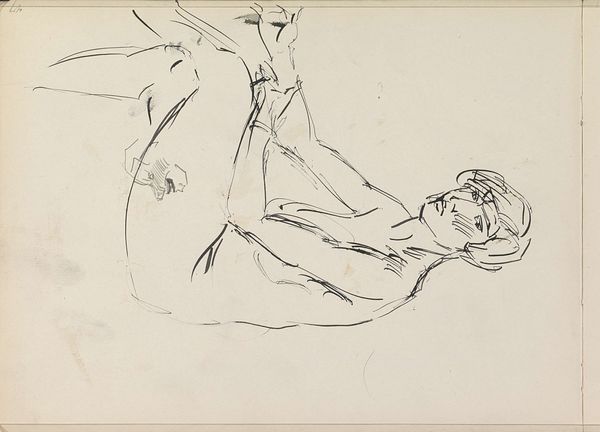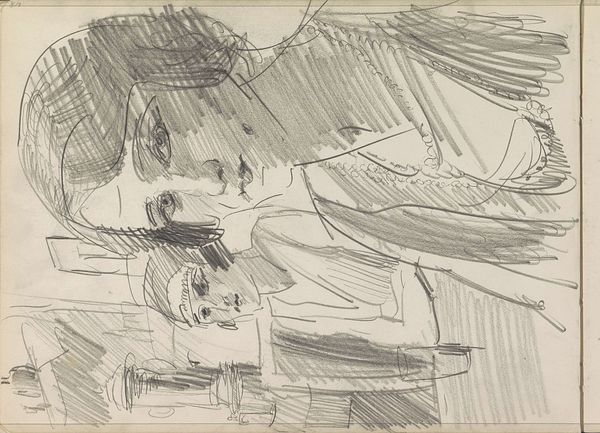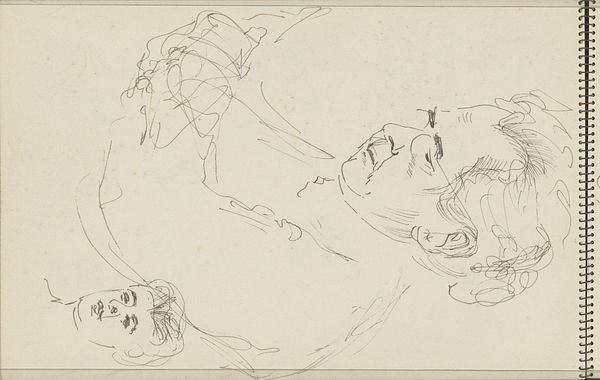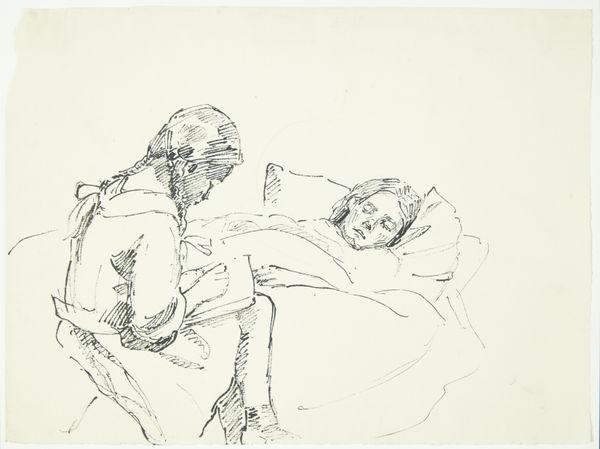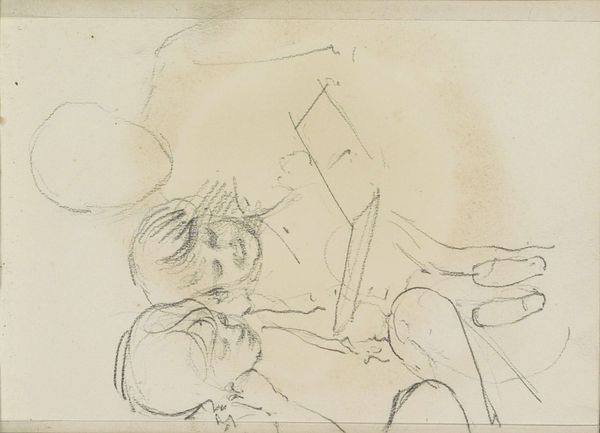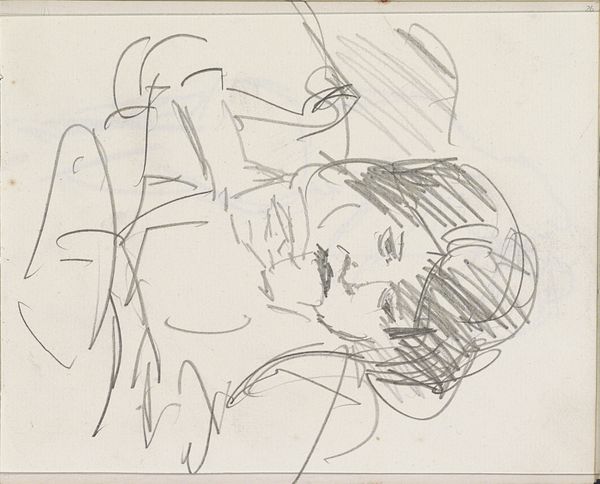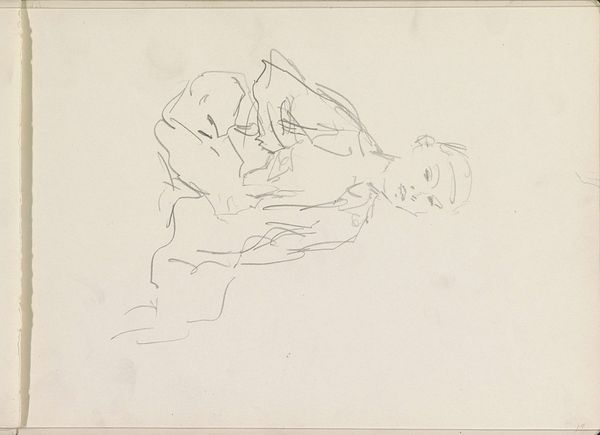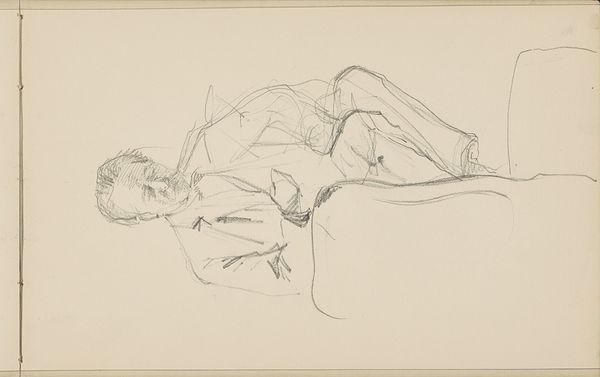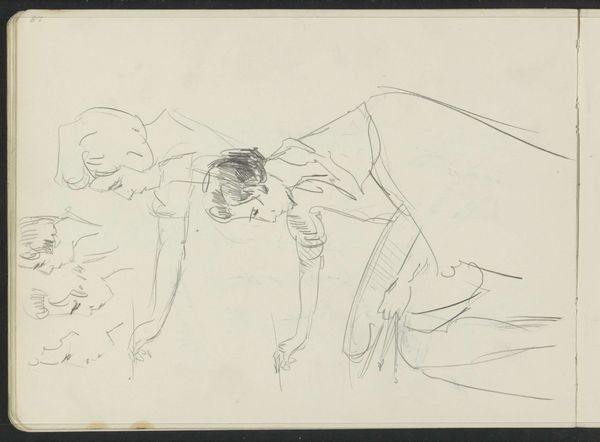
drawing, pencil
#
portrait
#
drawing
#
impressionism
#
pencil sketch
#
figuration
#
child
#
pencil
Copyright: Rijks Museum: Open Domain
Editor: So, this is "Two Children Reading" by Bramine Hubrecht, probably drawn sometime between 1865 and 1913. It's a pencil drawing, quite light and sketchy, and you really get a sense of intimacy and domestic life. What strikes you when you look at it? Curator: It's a charming piece. I immediately think about the representation of childhood in art during this period. We see a shift – away from the formal, almost miniature-adult portrayals common in earlier eras. What we get instead is an interest in capturing the fleeting moments of childhood and its quietude. This work reflects a broader social awareness and perhaps even a sentimental idealization of innocence and learning. What do you make of the sketchiness, the unfinished quality? Editor: I find it very modern, almost impressionistic, even though it's a drawing. Like a snapshot of a moment, rather than a posed portrait. Curator: Exactly! And it is this immediacy that speaks volumes. The sketch suggests an informal setting. This was made possible because of changes within the societal structure - with advancements within social classes. How do you feel it is a reflection of that? Editor: Well, because only the privileged classes have the means to purchase a drawing, and enough downtime to engage in art, in an intimate scene like reading. I also see an idealized version of how children from wealthier families interact. Curator: I think you're right, yes. The drawing romanticizes the scene while hinting at societal divides of leisure time and opportunity. It invites viewers to reflect on the position and perception of children within the broader societal canvas. It’s a piece that on first impression appears gentle, but encourages the recognition of culture and class. Editor: I hadn't considered how much a simple drawing could unpack social ideas of the period. Curator: Absolutely. Every brushstroke – or, in this case, pencil line – whispers stories of its time. Thanks for helping me delve deeper into its context.
Comments
No comments
Be the first to comment and join the conversation on the ultimate creative platform.
